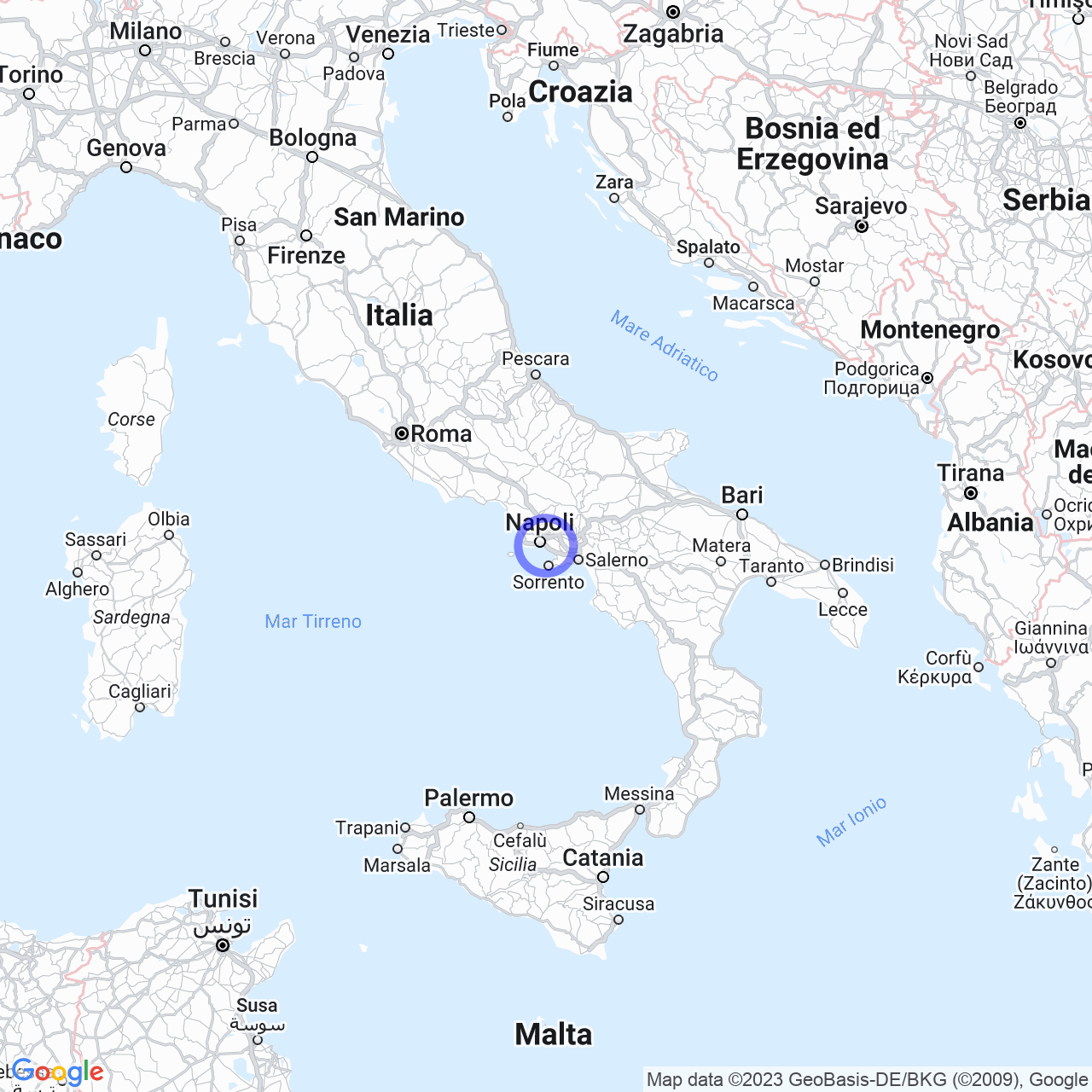Portici
Discovering Portici: the Naples municipality on the slopes of Mount Vesuvius
Hello everyone! Today, I'll be talking about the town of Portici, located in the metropolitan city of Naples, in Campania.

Physical geography
Territory
Portici is located on the slopes of Mount Vesuvius, along the Gulf of Naples coast. It borders to the north with the municipality of San Giorgio a Cremano and the district of Naples San Giovanni a Teduccio, to the south and east with Ercolano, and to the west it overlooks the Tyrrhenian Sea. Portici has a small gulf called Granatello, which takes its name from the many Punica granatum plants present until the 18th century.
Red zone of Vesuvius
Being located near Vesuvius, Portici is part of the so-called "red zone," the most at risk in case of eruption. But don't worry, because the Piedmont Region has a plan in case of evacuation, and would be ready to host the residents of Portici.
History
Portici has a past rich in honors, as evidenced by the numerous churches present in the town. The largest is the Basilica of Santa Maria della Natività and San Ciro, built after the Vesuvius eruption of 1631.
Landmarks and places of interest
Religious architectures
In addition to the basilica, it is possible to visit numerous churches in Portici, including the Church of the Immaculate Conception, the Church of Santa Maria della Libera, the Church of Maria SS. del Buon Consiglio, the Church of Maria SS. Addolorata, the Church of the Sacred Heart of Jesus, the Church of San Pasquale Baylon, the Church of St. Anthony of Padua and the Church of Maria SS. della Salute.
Civil architectures
The town of Portici is part of the so-called "Miglio d'oro" of the eighteenth-century Neapolitan and is known for the numerous villas built by wealthy Neapolitan nobles. Among these, stand out Villa Savonarola, currently home to some municipal offices and the venue for civil weddings, Villa Fernandes, now the venue for associations, Villa Maltese, leaning against the Reggia di Portici, Palazzo Mascabruno, which houses the Royal Racecourse, Villa Caposele, Villa Mascolo with its amphitheater, Villa Zelo, which was inhabited by Antonio Ranieri, and Villa d'Elboeuf, an eighteenth-century palace built in 1711.
On Corso Garibaldi, the main artery that connects Portici with Naples, also overlook Villa Scocchera, Villa Bideri, Villa Gallo and Palazzo Ruffo di Bagnara, all under the protection of the Superintendency of Architectural Heritage. Another building of interest is Palazzo Landriani in Bellavista, designed by Vanvitelli, which was the residence of the Orsini Gravina princes.
Conclusion
Here you have a brief overview of Portici, a town with a rich history and monuments of great interest. If you are in the area, why not take a detour to Portici and discover all its beauty? Bye!
